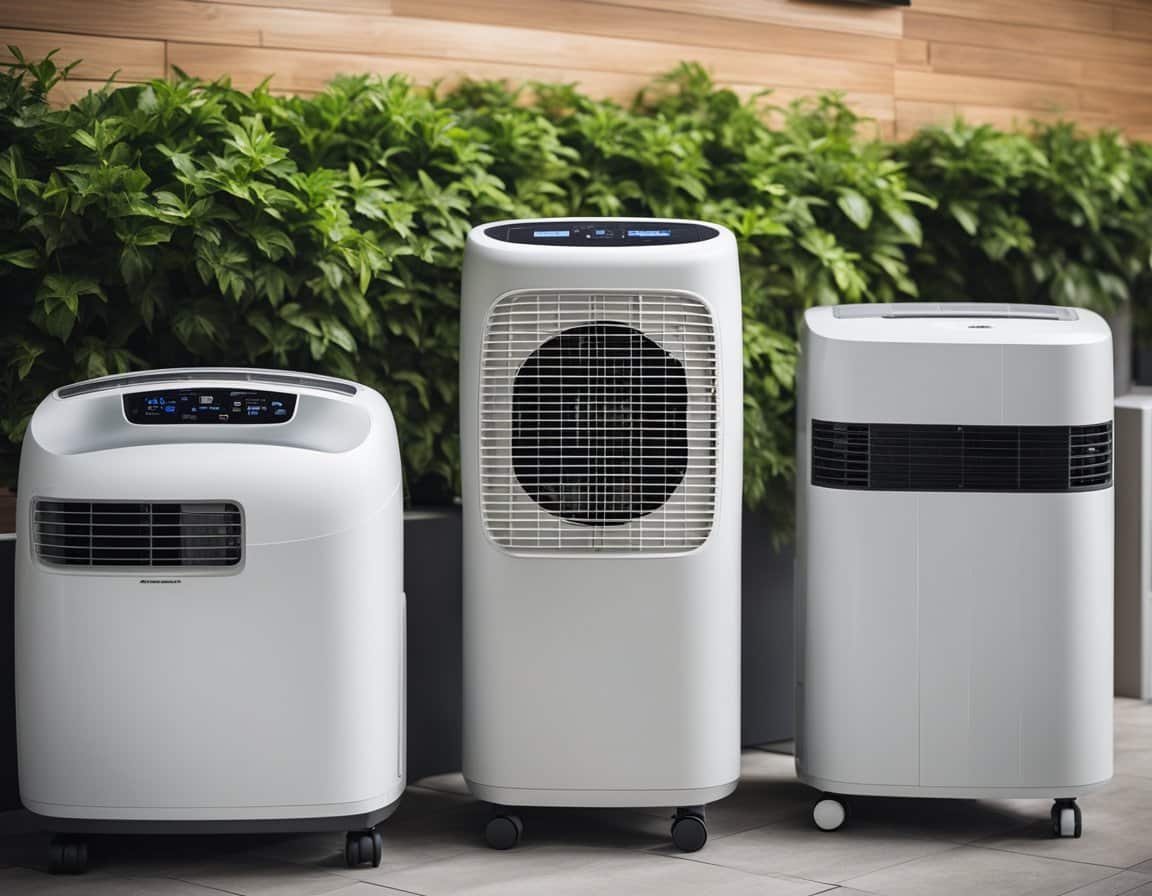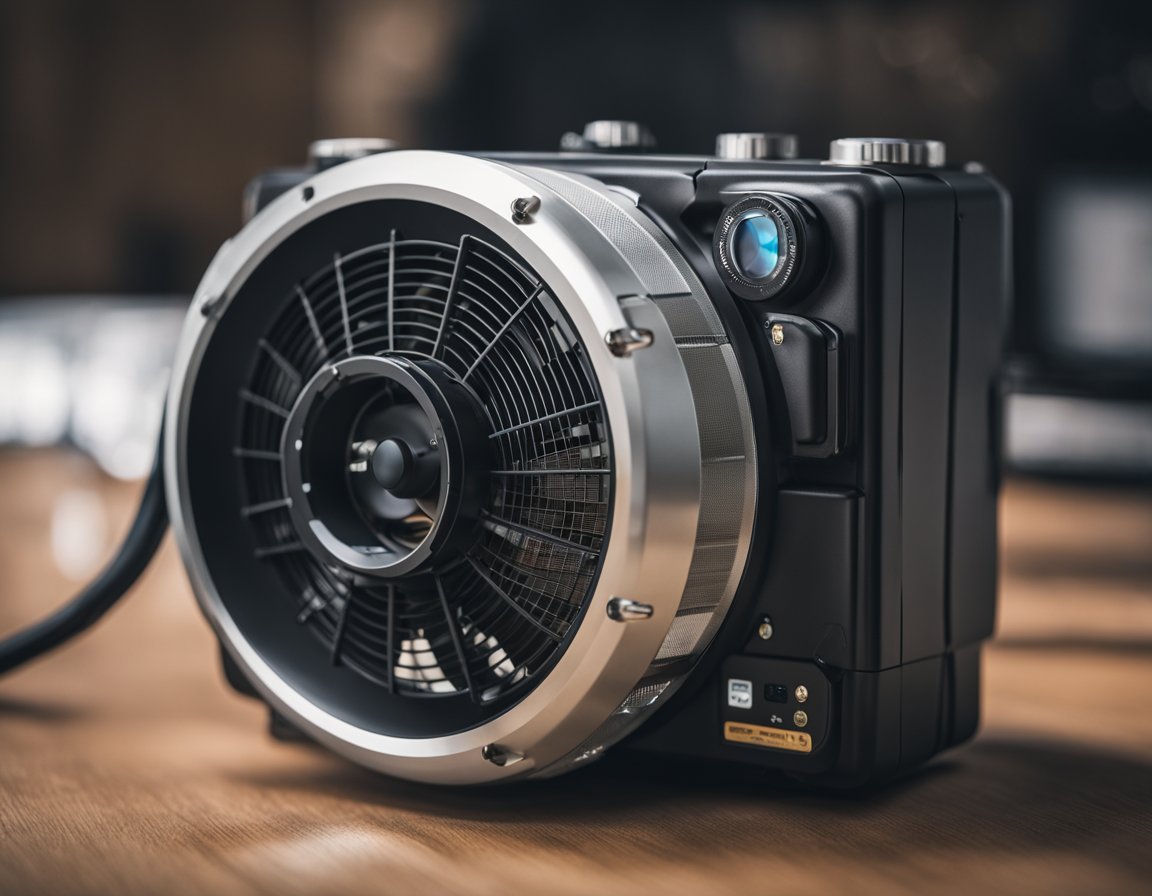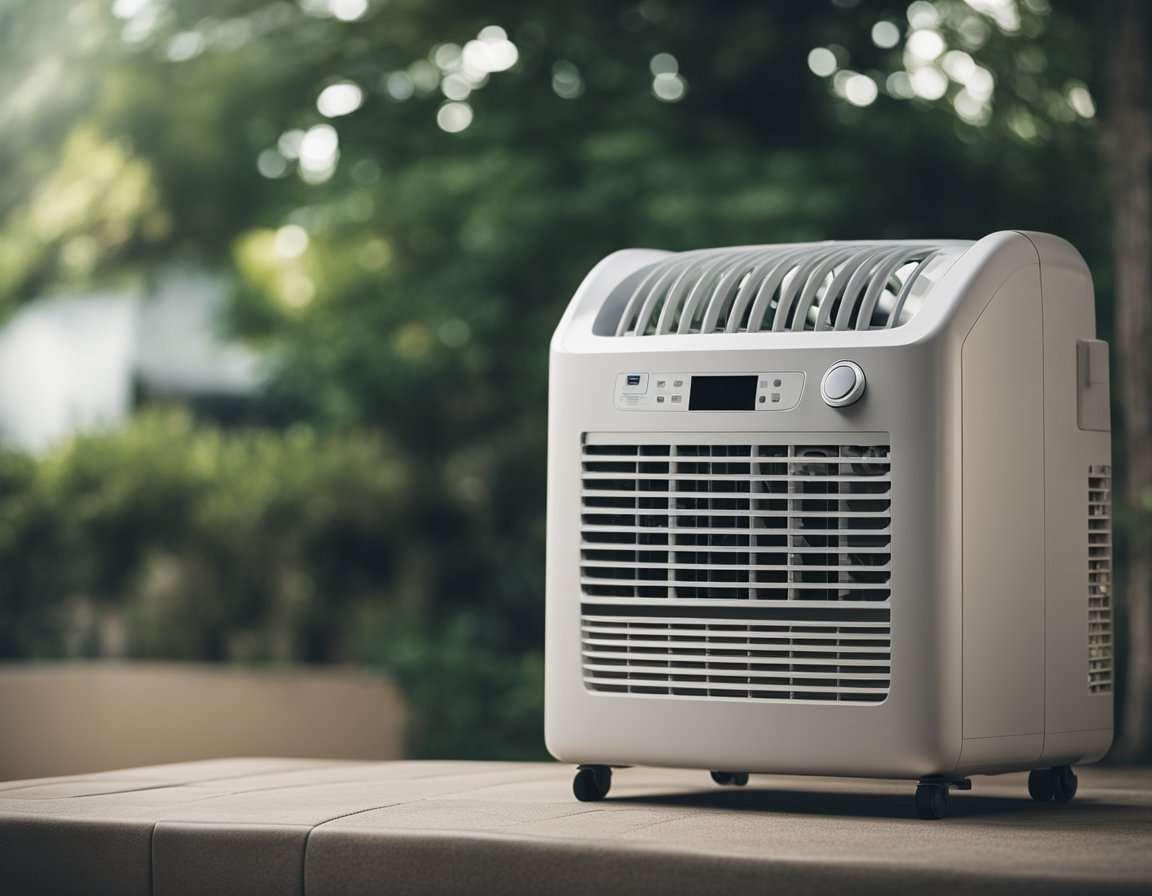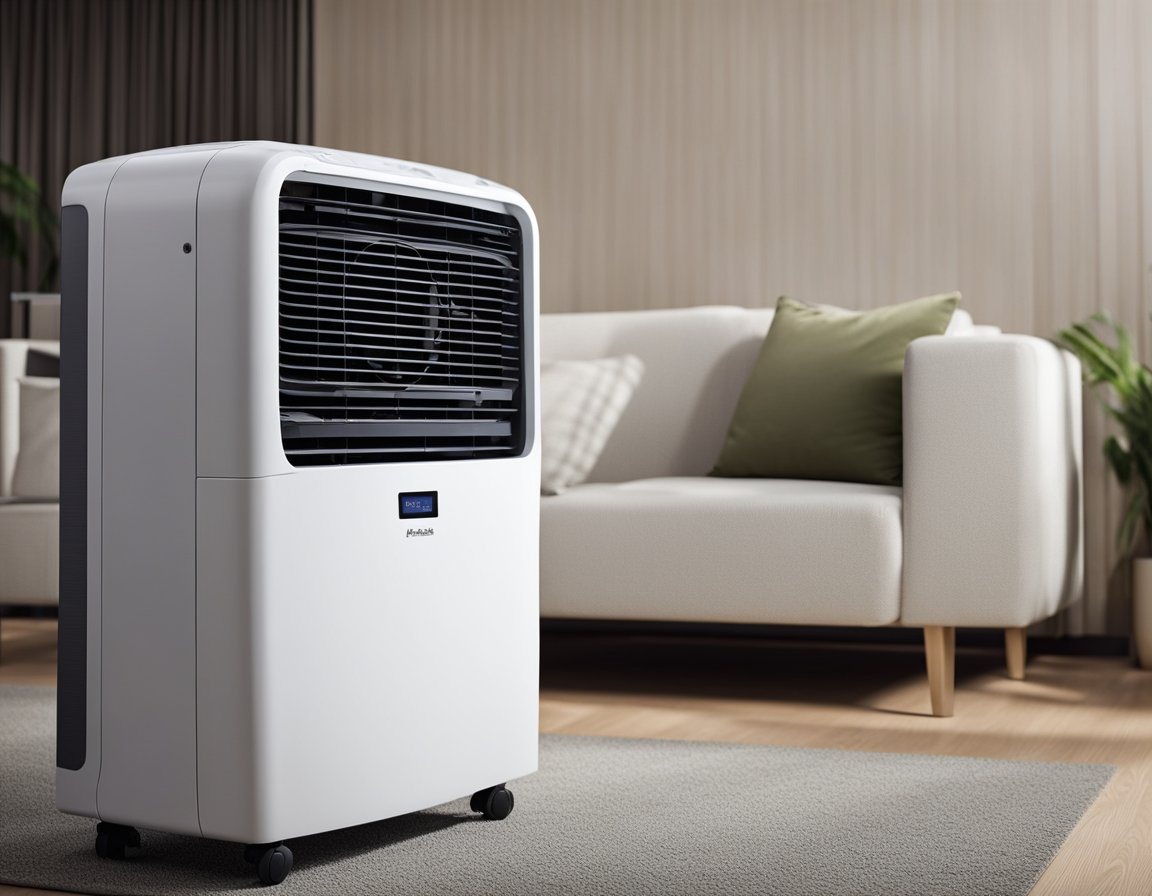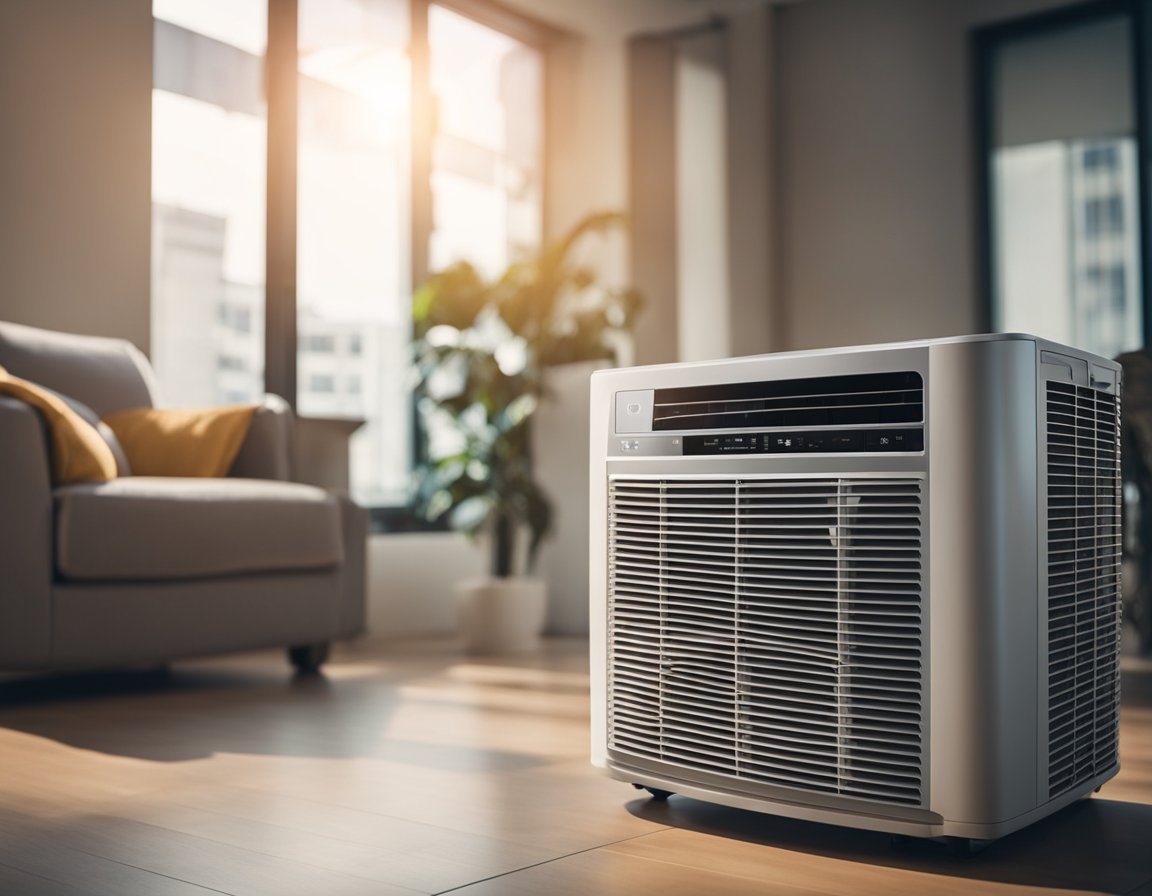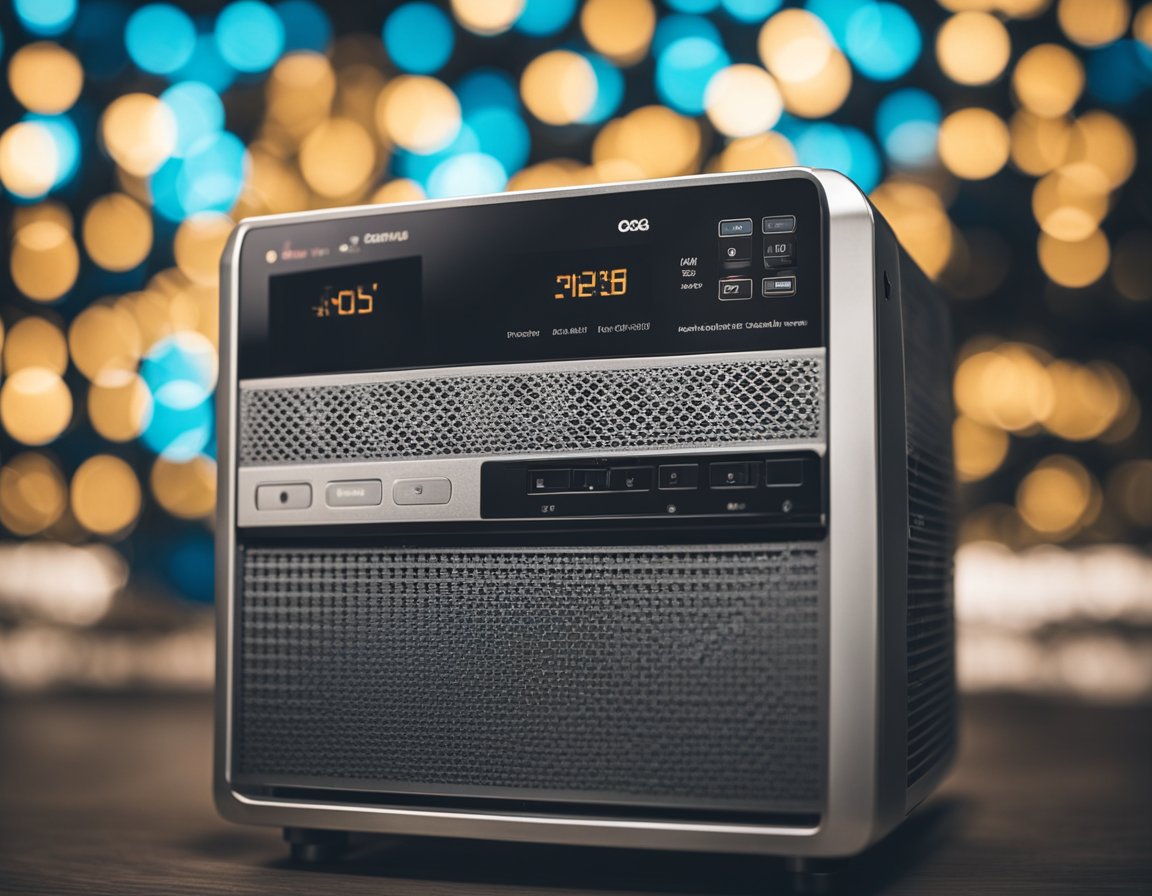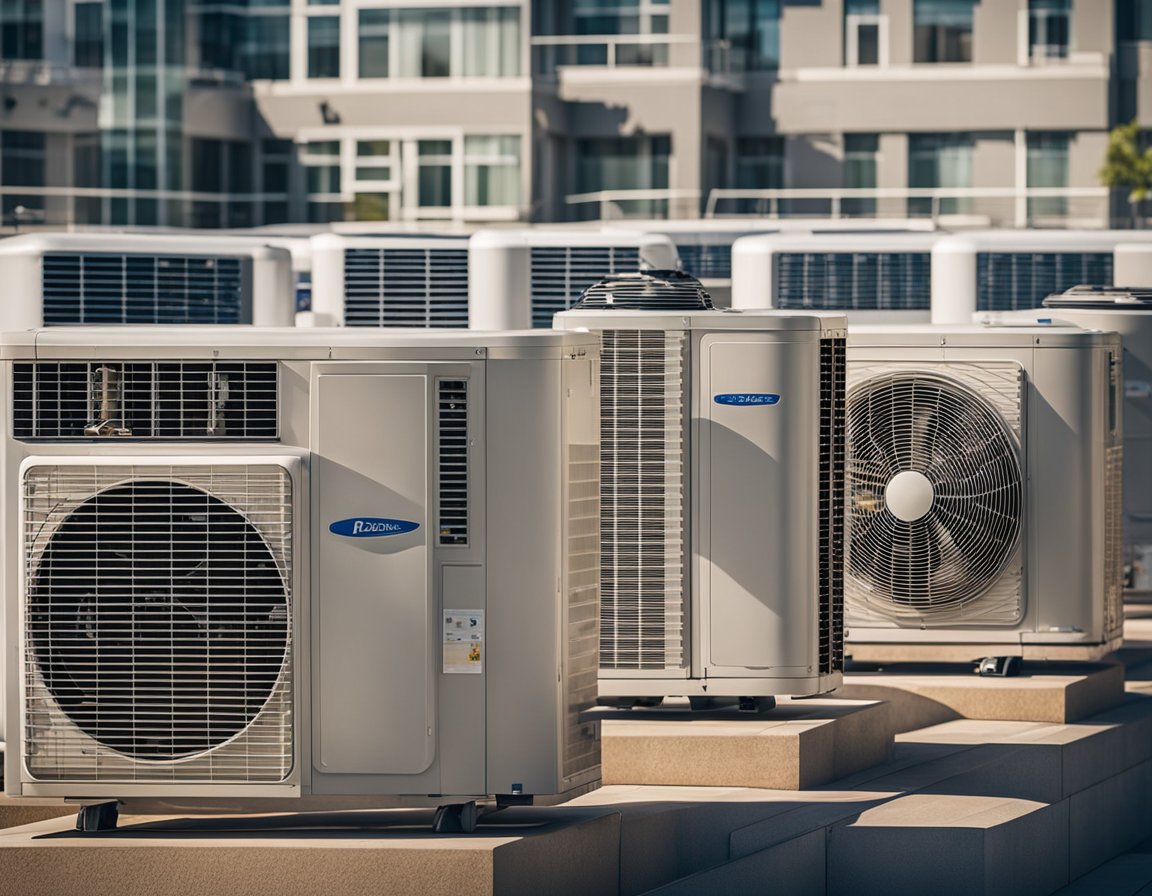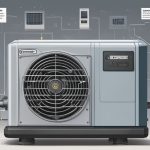Selecting the best portable air conditioner can be an overwhelming task, especially with the diverse range of options available on the market. This guide aims to make the selection process easier, by shedding light on the crucial factors you need to consider when choosing a portable air conditioner. From understanding the key features to knowing the right BTUs for your room, this guide will provide the essential information needed to make an informed decision.
Portable air conditioners serve as a convenient and cost-effective alternative to traditional window air conditioners, offering the flexibility to cool individual rooms as needed. By understanding how these units work, the varying types and sizes, and their special features, you’ll be better equipped to find the right unit for your specific needs. Additionally, it’s essential to consider factors like noise levels and maintenance requirements so you are fully aware of what to expect from your chosen unit.
Key Takeaways
- Understand the key features and types of portable air conditioners to make a better choice tailored to your needs
- Determine the appropriate BTU rating for your room to ensure optimal cooling efficiency
- Factor in special features, noise levels, and maintenance requirements when selecting a unit for a seamless experience
Understanding Portable Air Conditioners
Portable air conditioners are a versatile and energy-efficient solution for cooling your home during the hot summer months. These units are a great alternative to traditional central air and window AC units, offering flexibility and mobility to suit a variety of living arrangements.
Portable air conditioners work by pulling in warm air from the room, cooling it down, and then distributing the cooled air back into the space. The excess heat is vented outside through a window exhaust kit, making them a convenient option for those who are unable to install a window AC unit or prefer not to have a permanent installation.
When selecting the best portable air conditioner for your needs, there are several factors to consider. First, you’ll want to determine the necessary cooling capacity, which is measured in British Thermal Units (BTUs). A higher BTU rating generally indicates a more powerful unit, capable of cooling larger areas. It’s important to choose a portable AC with the right BTU capacity for your room size to ensure energy efficiency and optimal cooling performance. For example, an 8000 BTU unit is suitable for smaller rooms, while a 14,000 BTU unit can handle larger spaces 1.
Another consideration is the noise level of the unit, as portable air conditioners contain a compressor, fan, and other components that can sometimes generate noise. Look for units with low decibel ratings, or choose a product with reviews that mention quiet operation to minimize disturbances.
Finally, consider the available features, such as programmable temperature controls, dehumidification modes, and energy-saving options. These can improve the overall comfort and convenience offered by your portable air conditioner.
In summary, portable air conditioners provide a flexible and cost-effective solution for cooling your home. By considering factors such as BTU capacity, noise levels, and additional features, you can confidently select the best unit to suit your needs.
Footnotes
Key Features of Portable AC Units
Cooling Capacity and Performance
When selecting the best portable air conditioner, it is essential to consider the cooling capacity of the unit. Cooling capacity is measured in British Thermal Units (BTUs), and it determines the unit’s ability to cool a specific area. Generally, a higher BTU rating means better cooling performance. For example, a 10,000 BTU unit can cool a room of up to 450 square feet, while a 14,000 BTU unit can cool a room of 550-700 square feet. Keep in mind to choose the right BTU rating for your space to avoid an underperforming or overpowered AC unit.
Smart Features and Controls
Modern portable air conditioners offer smart features and controls, which enhance user experience and ease of use. Look for units with remote control options, Wi-Fi connectivity, and compatibility with smart home platforms like Amazon Alexa or Google Home. Some AC units even have dedicated apps, such as the LG app, which allows users to control their AC units from their smartphones. Smart features not only simplify temperature adjustments and scheduling but also help in monitoring and managing energy consumption.
Energy Efficiency and Consumption
Energy efficiency is another crucial aspect to consider when selecting a portable air conditioner. Opting for an energy-efficient unit can save on electricity bills while keeping your space comfortable. Most AC units come with an energy efficiency rating provided by the Department of Energy, displayed as an Energy Efficiency Ratio (EER) or a Seasonal Energy Efficiency Ratio (SEER). Higher ratings indicate better energy efficiency and lower overall energy consumption. Look for units with features such as sleep modes, programmable timers, and varying fan speeds to achieve maximum energy efficiency and adapt to your cooling needs.
Calculating the Right BTU for Your Room
Room Size and BTU
When selecting the best portable air conditioner for your home, it’s essential to choose the right cooling capacity. Cooling capacity is measured in British Thermal Units (BTU). To determine the right BTU rating for your room, you need to consider the room’s size in square feet.
A room with a higher square footage requires more BTUs to cool effectively. It’s also important to consider factors that may increase the heat load, like the number of windows, insulation, and if the room is near a kitchen. These factors can affect the necessary BTU rating of your portable air conditioning unit.
Square Footage and BTU
To calculate the required BTU rating for your room, first, measure the room’s square footage. You can do this by multiplying the room’s length by its width. Once you have the square footage, you can use an air conditioner BTU calculator or consult a BTU chart to determine the appropriate BTU capacity for your room.
Here’s a general guideline for different room sizes and the corresponding BTU ratings:
- 150 sq ft or less: 5,000 BTUs
- 150-250 sq ft: 6,000 BTUs
- 250-300 sq ft: 7,000 BTUs
- 300-350 sq ft: 8,000 BTUs
- 350-400 sq ft: 9,000 BTUs
- 400-450 sq ft: 10,000 BTUs
Remember, these are just general guidelines, and other factors like insulation, sunlight exposure, and ceiling height may affect the optimal BTU rating for your room.
By understanding the relationship between room size, square footage, and BTU ratings, you can confidently select the best portable air conditioner for your specific needs. This will ensure that your room stays cool and provides a comfortable environment during the hot summer months.
Dehumidification Features
Role of Dehumidifiers in AC Units
Portable air conditioners not only cool the air, but they also have the ability to function as dehumidifiers. Dehumidifiers work by removing excess moisture from the air, which can greatly improve the comfort and air quality in your living space. High humidity levels can lead to mold and mildew growth which can cause health issues.
To use your portable air conditioner as a dehumidifier, first switch your portable air conditioner to dehumidify mode. Most units will have this mode displayed on the display screen with a water droplet symbol. Once your air conditioner is in dehumidify mode, it will effectively reduce humidity levels in the room, providing a more comfortable environment.
Air Purifiers in AC Units
Many portable air conditioners are also equipped with air purifiers that include built-in air filters and a carbon filter. Air filters help remove pollutants, allergens, and dust from the air, while carbon filters neutralize odors and remove harmful volatile organic compounds (VOCs) that can cause irritation and discomfort.
Carbon filters enhance the air purification process in air conditioning units, and are an essential part of maintaining good indoor air quality. In most cases, these filters need to be replaced periodically to ensure optimal performance. Be sure to consult your portable air conditioner’s user manual for specific maintenance instructions and recommendations.
In summary, when selecting a portable air conditioner, it is essential to consider the dehumidification features, as these will battle humidity levels and ensure cleaner air for your living environment. With the right combination of a dehumidifier mode, air filters, and carbon filters, your portable air conditioner will help create a more comfortable and healthier living space.
Loudness and Noise Levels
When selecting the best portable air conditioner, it is important to consider the loudness and noise levels. A quiet air conditioner allows for peaceful sleep and undisturbed conversations while providing effective cooling. The noise output of portable air conditioners is measured in decibels (dB), and lower numbers indicate quieter units.
Typically, the quietest portable air conditioners have a noise level ranging from 42dB to 53dB. These units provide minimal disturbance while operating. For comparison, a quiet conversation may range between 40 to 60dB. Keep in mind that some manufacturers may inflate their noise level claims, so it’s important to always rely on trustworthy sources for accurate information. You can check out this list of the quietest portable air conditioners in 2023 to help with your decision.
It is also worth noting that the design of an air conditioner and its features can impact the overall noise output. Dual-hose portable air conditioners are generally quieter than single-hose models, as they don’t need to work as hard to extract hot air. Another factor to consider is the fan speed. Many portable air conditioners offer multiple fan speed settings, which allow you to balance the cooling effect with noise output. Lower fan speeds tend to produce less noise.
To further minimize noise, it’s essential to follow proper installation guidelines and ensure adequate insulation for your unit. If your portable air conditioner seems excessively loud, it’s worth investigating for any issues like loose components or airflow blockage. A well-maintained unit will operate more efficiently and produce less noise.
In summary, taking the time to research and prioritize noise levels when selecting a portable air conditioner can greatly enhance your overall experience and comfort in your living space. Always consider reputable brands and sources when comparing noise levels to make an informed decision.
Popular Brands of Portable AC Units
When it comes to selecting the best portable air conditioner, it is essential to consider trusted and top-rated brands in the market. In this section, we focus on some of the popular brands of portable air conditioning units, along with their top-rated products and features.
Comparison of Brands
Several well-known brands offer portable air conditioning units, each with its own features and benefits. Some of these brands include:
- Midea: Known for affordability and efficiency, Midea offers various models for both residential and commercial purposes. Midea’s portable AC units are known for their value and budget-friendly pricing.
- Whynter: Whynter provides premium and innovative air conditioning solutions. Their Whynter Dual Hose Portable Air Conditioner is highly ranked on Amazon for its performance and effectiveness.
- LG: A trusted brand in electronics, LG offers high-quality and efficient portable AC units. One of their top-rated products is the LG LP1419IVSM, which features dual inverter technology, reducing energy consumption and noise levels.
- Black+Decker: Black+Decker is known for producing reliable and efficient appliances. Their portable AC units are no exception, with the Black+Decker 8,000 BTU Portable Air Conditioner being suitable for smaller rooms.
- Honeywell: Honeywell offers a wide range of air conditioning systems, including portable units, known for their durability and effectiveness.
- Frigidaire: With a reputation for quality and performance, Frigidaire offers a range of portable air conditioning solutions designed for optimum cooling.
- De’Longhi: De’Longhi is known for creating stylish and functional appliances, and their portable AC units are an excellent example of their innovation and performance.
- Shinco: Shinco offers a range of budget-friendly portable air conditioners, popular for their affordability and efficiency.
Top-rated Brands on Amazon
When considering customer ratings and feedback, Amazon serves as a reliable platform to evaluate the performance of various portable air conditioner brands. Among the top-rated brands on Amazon are Whynter, LG, and Black+Decker. Consumers often appreciate these brands for their value, performance, and customer satisfaction.
In conclusion, selecting the best portable air conditioner involves considering factors like efficiency, size, budget, and brand reputation. By opting for well-known and top-rated brands like Midea, Whynter, LG, Black+Decker, Honeywell, Frigidaire, De’Longhi, and Shinco, you can ensure that you invest in a high-quality product that meets your cooling needs effectively and efficiently.
Portability and Placement of AC Units
Portable air conditioners are known for their ease of use and mobility, which makes finding the perfect spot for them in your home essential. One of the primary factors contributing to their convenience is the presence of wheels or caster wheels that allow you to move the unit effortlessly from one room to another.
When considering placement, it’s crucial to position the AC unit near a window, ensuring adequate space for smooth operation. Similar to window air conditioning units, portable models require proper air intake to cool the room efficiently. They vent hot air through a tube that can be easily connected and set up near the window, as seen in this guide.
To achieve efficient cooling and maintain the desired temperature, pay attention to the following factors while placing your portable air conditioner:
- Ventilation: AC units rely on airflow for optimal performance. Choose a well-ventilated area that will allow the unit to draw in air effectively and provide adequate cooling to the space. T3 recommends placing your portable AC in an area that will not hinder air circulation.
- Portability: Ensure that the unit you select has built-in wheels or caster wheels, enabling you to move it easily across various surfaces. With improved mobility, you can quickly relocate the air conditioner based on your cooling needs throughout the day.
- Size: Select an air conditioner with appropriate cooling capacity for the size of your room. Larger rooms require more BTUs to cool efficiently, so consider the square footage of your space while selecting a model. The Whynter ARC-14S, for example, has a cooling power of 14,000 BTU (ASHRAE) and covers up to 500 square feet.
By considering these factors and ensuring proper placement of your portable air conditioner, you can expect to achieve effective and consistent cooling throughout your home while enjoying the flexibility and convenience that these units offer.
Types and Size of AC Units
When choosing an air conditioner for your space, it’s essential to consider the type and size of AC units available. There are two main types of air conditioners: portable and window units. Each type has its own advantages and drawbacks, depending on your specific needs and the size of the space you need to cool.
Portable Vs Window AC Units
Portable AC Units are mobile, easy to install, and suitable for cooling small to medium-sized spaces. They are a versatile option for those who don’t want to commit to a fixed installation or need to move the unit between rooms. A popular brand offering portable AC units is LG. Portable units come in single and dual hose systems, with dual hose systems being more efficient as they avoid creating negative pressure within the room.
- Pros of Portable AC Units:
- Mobility: Easy to move between rooms and transport.
- Compatibility: Works with most windows and can be used in spaces where window AC units are not feasible.
- Ease of installation: No need for professional help; set up involves attaching an exhaust hose to a window.
- Cons of Portable AC Units:
- Less energy efficient than window units.
- Can be noisy.
- Occupies floor space within the room.
Window AC Units are fixed air conditioners that are installed within a window or an opening in the wall. These units are more energy efficient compared to portable units and are suitable for cooling small to large spaces. A well-known brand offering window AC units is LG.
- Pros of Window AC Units:
- Energy efficiency: Higher cooling capacity with lower energy consumption.
- Noise reduction: Less noise as the compressor is outside the room.
- Does not occupy floor space in the room.
- Cons of Window AC Units:
- Limited mobility: Once installed, it is difficult to move the unit.
- Installation: Requires professional help and might not be compatible with all windows.
- Aesthetics: Can block the view and alter the appearance of a window.
In conclusion, selecting the best air conditioner for your space will depend on factors such as room size, mobility needs, and energy efficiency requirements. Consider the pros and cons of both portable and window AC units to make an informed decision that best meets your needs.
Special Features of AC Units
Heating Capabilities
Some portable air conditioners come with built-in heating capabilities, making them a versatile choice for year-round comfort. These units can function as heaters when the temperature drops, providing both cooling and heating solutions in a single appliance. By investing in a unit with this feature, you can save space and reduce the need for multiple devices in your home.
Sleep Mode
Sleep mode is a convenient feature that adjusts the temperature settings to create a more comfortable environment for sleeping. This function typically raises the temperature by a few degrees over a period, and reduces the noise level of the unit for a more peaceful night’s rest. Selecting a portable air conditioner with sleep mode ensures a better sleep quality while saving energy.
Programmable Timer
A programmable timer is an essential feature for those who want to customize their air conditioning experience. It allows you to set the desired duration and operating hours for your air conditioner, resulting in energy efficiency and cost-saving benefits. For instance, you can program the unit to start cooling your room before you arrive home, ensuring comfortable living conditions upon your return.
Dual-hose Design
Dual-hose models are designed to be more energy-efficient and effective in cooling larger spaces. A dual-hose portable air conditioner has two separate hoses: one that pulls hot air from the room and expels it outdoors, and another that brings fresh air from outside to cool the room. This design enables the unit to cool a room more quickly and maintain a stable temperature by reducing the need for constant cycling. When selecting a portable air conditioner, considering a dual-hose model can prove advantageous in terms of energy efficiency and performance.
Maintenance and Set-Up of Your AC Unit
When choosing a portable air conditioner, it is essential to consider the maintenance and set-up processes to ensure optimum performance and longevity.
Cleaning Your AC Unit
Regular cleaning of your AC unit is crucial for maintaining efficiency and extending its life. Start by cleaning the air filters, as dirty filters can reduce airflow and affect the unit’s cooling capacity. The Department of Energy recommends cleaning or replacing air filters every month or two, especially during peak usage periods.
Furthermore, make sure to remove any dust or debris from the fans and vents periodically. This will help maintain a clean air flow and prevent the unit from working harder than necessary, which would consume more energy and increase your electricity bill.
Safety Precautions
While setting up a portable air conditioner, it’s essential to follow a few safety precautions to ensure reliable and safe operation. One of these precautions is to ensure that the unit is being operated on a circuit supplying at least 120VAC, 15A, as this provides the necessary startup power for the compressor and fan motors. Additionally, using an electrical surge preventer can help protect your AC unit from unexpected voltage spikes.
As you select the ideal portable air conditioner for your needs, pay attention to the product’s specs, such as the set point range, lowest temperature, and fan speeds. Choose a unit that offers reliable performance, preferably with smart features that enable you to control the device remotely and monitor its energy usage.
When cooling a room, determine the amount of BTUs (british thermal units) required based on the room’s size and other factors such as insulation and sun exposure. For accurate measurement and sizing, refer to guidelines provided by the American Society of Heating, Refrigerating and Air-Conditioning Engineers (ASHRAE).
In comparison to central air conditioning systems, portable air conditioners offer relatively easy set-up and more flexibility in cooling specific areas within a room or home. However, always be aware of the maintenance and safety precautions required to keep your unit functioning at its best and providing you with a comfortable living environment.
Frequently Asked Questions
What factors should be considered when choosing a portable air conditioner?
When choosing a portable air conditioner, consider factors such as the room size, desired cooling capacity (measured in BTUs), noise level, energy efficiency, and additional features like remote control access, programmable timers, and built-in air filters.
How do I determine the appropriate BTU for my room size?
The appropriate BTU (British Thermal Units) for your room size mainly depends on the area you want to cool. For example, a 5,100 BTU portable air conditioner can cool a small room, while a larger room requires a higher BTU rating EcoFlow. Measure your room’s square footage and consult a BTU chart or an online calculator for guidance.
What are the differences between self-evaporating and non-evaporating models?
Self-evaporating portable air conditioners remove most of the collected condensation by evaporating it and expelling it through the exhaust hose. This reduces the frequency of manually emptying the water tank. Non-evaporating models collect condensation in a tank or tray that requires manual emptying This Old House.
Which popular portable air conditioner brands should I compare?
Some popular portable air conditioner brands include BLACK+DECKER, Whynter, Midea, SereneLife, and LG This Old House. Each brand offers different features, price ranges, and cooling capacities. Compare various models based on your needs and preferences.
Can portable air conditioners be used effectively in different room sizes?
Yes, portable air conditioners can be used effectively in different room sizes. However, it is essential to choose a unit with the appropriate BTU rating according to the room size to ensure optimal cooling performance EcoFlow.
What are the essential accessories or installation kits needed for a portable air conditioner?
The essential accessories for a portable air conditioner typically include an exhaust hose, a window venting kit, and a connection to a power source. Some models may also require additional attachments or support for draining condensation Compact Appliance. Make sure to check the manufacturer’s recommendations for specific installation requirements for your chosen model.

